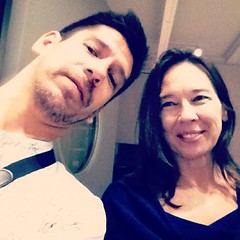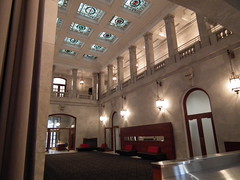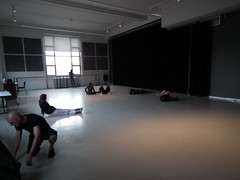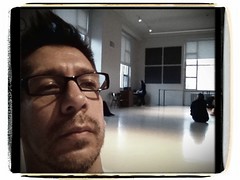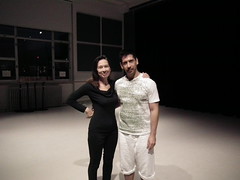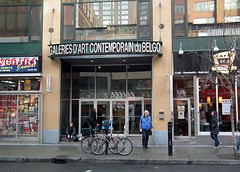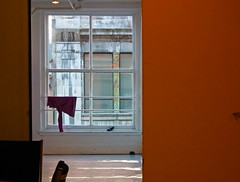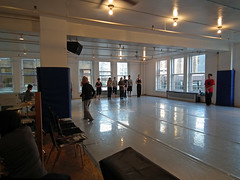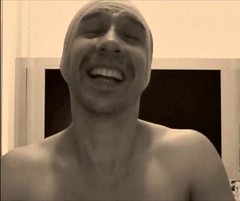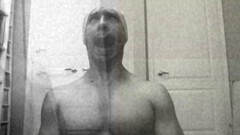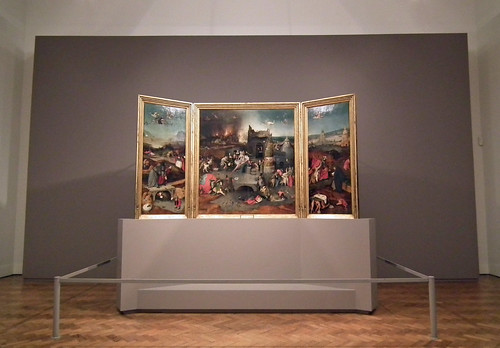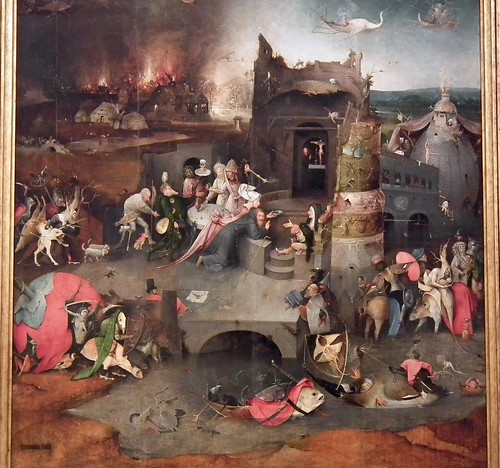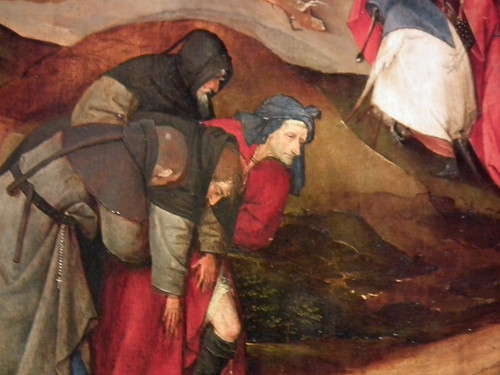 |
| Hans Christian Andersen |
| Henrik Ibsen |
In Ibsen’s Biography by Michael Meyer, Meyer reconstructs a curious meeting in London between two giants of Literature, Henrik Ibsen and Hans Christian Andersen. The whole text is a curiosity, it depicts very well, in a real situation, those two extreme personalities, that child-like and frivolous Andersen and the reasonable and self-assured Ibsen, but also is full of simple funny anecdotic details which make reading literature (or theatre) history a big pleasure:
"Hans Andersen was eager to meet the new dramatist, having apparently forgotten their brief encounter in 1852. On 11 August (1870) he noted in his diary: "Fru Melchior told me that the poet Ibsen was dinning today with Carl Bloch, and expressed surprise that I had not been invited. I was put in a bad humor by the thought of how little attention B. had paid to me." "I wasn't there," he wrote the next day to Henriette Collin, "but would have liked to have been invited, to see at last this Norwegian poet who doesn't like the Norwegian." A week later he got his wish, when Moritz Gerson Melchior, a politician in whose eighteenth-century house overlooking the Sound Andersen had, by generous arrangement, a permanent suite of three or four rooms, gave a party for the two writers. Andersen tried to prepare himself for the meeting with a little homework, and the result depressed him. "Read Peer Gynt," he noted in his diary fro 18 August, "which is written by a mad poet. One goes crazy oneself reading this book. The poetry isn't good either, there is something sick and distraught about the whole thing. Am sorry I read it, as Ibsen is coming here this evening fro the first time. I've never seen him; he's said to be taciturn and gloomy." But the occasion passed off unexpectedly well, for the diary continues: "After dinner he arrived with Bloch, and made a good impression … He talked well and amiably. We all liked him."
Andersen's diary conceals how close the evening came to being a disaster. According to John Paulsen, who had the story from Ibsen himself:
"Many of the city's most notable personages were among the guests. Everyone had arrived and was ready to sit down, but no Andersen descended from his room upstairs. A quarter of an hour passed, half an hour; a nervous restlessness settled on the company, and the hostess looked unhappy. Message after message was sent up, but he still did not appear. The hostess quietly went upstairs, but returned with a more worried expression than before. he would not come down. No one said anything to the guest of honor, but Ibsen sensed what was afoot. Andersen did not like to be with people of whose sympathy he was not sure. When people mentioned strange authors he would naïvely ask: "Does he admire me?" The atmosphere grew more embarrassed. It was now three-quarters of an hour past the appointed time for supper. The host and hostess were at loss what to do. Were they to sit down without Andersen?
Then Ibsen saved the situation. He took his host aside and asked to be allowed to go up to Andersen's room and speak with him. The host nodded and showed him the way. A minute after, to the joyful surprise of the company, the two great writers entered the room arm in arm, Andersen evidently deeply moved, smiling through his tears. He was like a small child who has got his way.
"But what happened between you and Andersen in his room?" I asked Ibsen. Ibsen smiled at the memory. "I embraced him and paid him a casual compliment. He was moved and, as he returned my embraced asked, 'Then, you really like me?'" Ibsen added: "It was one of the pleasantest evenings I have ever known. Andersen could be lovable and entertaining as few other men when he wanted to be."
Andersen was delighted with his new acquaintance. He wrote to a friend that he had found Ibsen "very amiable, unassuming and pleasant. I like him a lot, but Peer Gynt not at all."
"Hans Andersen was eager to meet the new dramatist, having apparently forgotten their brief encounter in 1852. On 11 August (1870) he noted in his diary: "Fru Melchior told me that the poet Ibsen was dinning today with Carl Bloch, and expressed surprise that I had not been invited. I was put in a bad humor by the thought of how little attention B. had paid to me." "I wasn't there," he wrote the next day to Henriette Collin, "but would have liked to have been invited, to see at last this Norwegian poet who doesn't like the Norwegian." A week later he got his wish, when Moritz Gerson Melchior, a politician in whose eighteenth-century house overlooking the Sound Andersen had, by generous arrangement, a permanent suite of three or four rooms, gave a party for the two writers. Andersen tried to prepare himself for the meeting with a little homework, and the result depressed him. "Read Peer Gynt," he noted in his diary fro 18 August, "which is written by a mad poet. One goes crazy oneself reading this book. The poetry isn't good either, there is something sick and distraught about the whole thing. Am sorry I read it, as Ibsen is coming here this evening fro the first time. I've never seen him; he's said to be taciturn and gloomy." But the occasion passed off unexpectedly well, for the diary continues: "After dinner he arrived with Bloch, and made a good impression … He talked well and amiably. We all liked him."
Andersen's diary conceals how close the evening came to being a disaster. According to John Paulsen, who had the story from Ibsen himself:
"Many of the city's most notable personages were among the guests. Everyone had arrived and was ready to sit down, but no Andersen descended from his room upstairs. A quarter of an hour passed, half an hour; a nervous restlessness settled on the company, and the hostess looked unhappy. Message after message was sent up, but he still did not appear. The hostess quietly went upstairs, but returned with a more worried expression than before. he would not come down. No one said anything to the guest of honor, but Ibsen sensed what was afoot. Andersen did not like to be with people of whose sympathy he was not sure. When people mentioned strange authors he would naïvely ask: "Does he admire me?" The atmosphere grew more embarrassed. It was now three-quarters of an hour past the appointed time for supper. The host and hostess were at loss what to do. Were they to sit down without Andersen?
Then Ibsen saved the situation. He took his host aside and asked to be allowed to go up to Andersen's room and speak with him. The host nodded and showed him the way. A minute after, to the joyful surprise of the company, the two great writers entered the room arm in arm, Andersen evidently deeply moved, smiling through his tears. He was like a small child who has got his way.
"But what happened between you and Andersen in his room?" I asked Ibsen. Ibsen smiled at the memory. "I embraced him and paid him a casual compliment. He was moved and, as he returned my embraced asked, 'Then, you really like me?'" Ibsen added: "It was one of the pleasantest evenings I have ever known. Andersen could be lovable and entertaining as few other men when he wanted to be."
Andersen was delighted with his new acquaintance. He wrote to a friend that he had found Ibsen "very amiable, unassuming and pleasant. I like him a lot, but Peer Gynt not at all."
*Ibsen Biography. Michael Meyer. Page 323.
Texts, photographs and videos in this Blog are all author's property, except when marked. All rights reserved by Gustavo Thomas.
If you have any interest in using any text, photograph or video from this Blog, for commercial use or not, please contact Gustavo Thomas at gustavothomastheatre@gmail.com.

